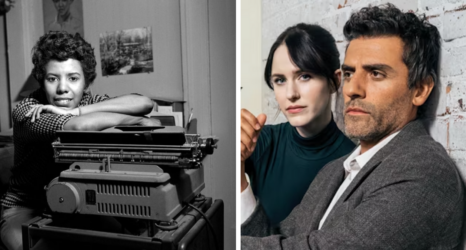“You have never gone to a public school, so you won’t understand the challenges students face. Every solution to a problem you come up with will be from an isolated point of view.” The criticism came from a male colleague commenting on my job transition after 13 years working in various engineering roles at Lockheed Martin, Boeing and Raytheon to vice president of education and programs at a major museum.
Yes, I was fortunate to have private education—but my decision to become an advocate for K-16 STEM education is because of the dire lack of encouragement and support for girls and women in underserved communities to enter the fields and stay there, and his criticism is a snapshot of what many women of color like me face in the field.
According to the Harvard Business Review, nearly 40 percent of women with engineering degrees either leave the field or never break into it in the first place, and a new study from the Pew Research Center shows that blacks represented 1.9 percent and Hispanics represented 4.4 percent of the “professional-level workforce” at 75 Silicon Valley tech firm offices. Myriad factors shape women’s fear the sticking with STEM isn’t worth it, especially women of color—from the constant questioning of their technical capabilities to the other microaggressions they face at work.
There is a myth that there are not enough qualified students of color completing degrees in STEM and tech fields—but there are hundreds of thousands of students of color who have graduated from STEM programs. 319,000 Bachelor degrees in the STEM fields were awarded to students between 2013 and 2014 alone. Only 17 percent were white; 11 percent were Black, 14 percent were Hispanic and 14 percent were American Indian.
As an African American woman graduate of Tuskegee University in Aerospace Engineering and graduate of New Mexico State University with a Masters Degree in Industrial Engineering, I understand educational accomplishments are never easy no matter where you go to school. Historically black colleges and universities produce 27 percent of African American graduates in STEM fields with many working in Fortune 500 companies. Tuskegee, an historically black college, is the number one producer of African American aerospace science engineers in the nation.
But degrees are not enough. They alone cannot squelch assumptions and unconscious biases. Building the STEM pipeline, and filling and sustaining it with women of color, requires more advocates and organizations dedicated to addressing equity and systematic issues. “Supporting organizations that are developing interventional models tailored to the unique needs of students of color, with a focus on cultural identity and relevancy embedded in their program models,” Kimberly Bryant, founder of Black Girls Code, recently stated, “is the key.”
Starting as early as kindergarten and through college, students in underserved communities of color not only face academic challenges, but also have the desire to fit in while not losing a sense of cultural identity. Self-awareness is critical for students, and being able to see STEM leaders who look like them is powerful.
At the Frontiers of Flight Museum, the mission is to increase the number of young women leaders seeking career guidance to enter STEM fields through the Young Women’s STEM Leadership Initiative. A recent $50,000 Boeing grant helps to provide a roadmap with a clear course to enhance quality STEM programming to 2,100 girls with new resources and activities to inspire and empower underserved young women across North Texas.
“I know going into the healthcare field I will be faced with people who don’t want my care,” a high school teen I recently mentored through a nonprofit leadership advisory board told me. “The more hospitals I visit for clinical and for other reasons, I realize I have yet to see a black physician, and [have seen] very few females. It won’t stop me from following my dreams, and knowing what you have faced and overcome will always be an inspiration to me.”
In Black Panther, the character Princess Shuri—a young black teen STEM genius in the fictional land of Wakanda—serves as real inspiration to millions of young women who look like her and aspire to careers of innovation in engineering and science. It is heartening to know that her presence can have an impact; it is disappointing to recognize that it took an act of fiction to make women like her tangible role models to girls and women of color. With experience in the aerospace industry, and now as an education advocate, I see the necessity to regularly interact with teachers through K-12 school and outreach programs to understand both what students are learning and the best way to create practical application tools for providing multiple exposures to STEM Education.
Representation matters. And we won’t see parity for girls and women of color in STEM until we find the Shuris all around us—and foster their own visions of what they could create, innovate and become.





